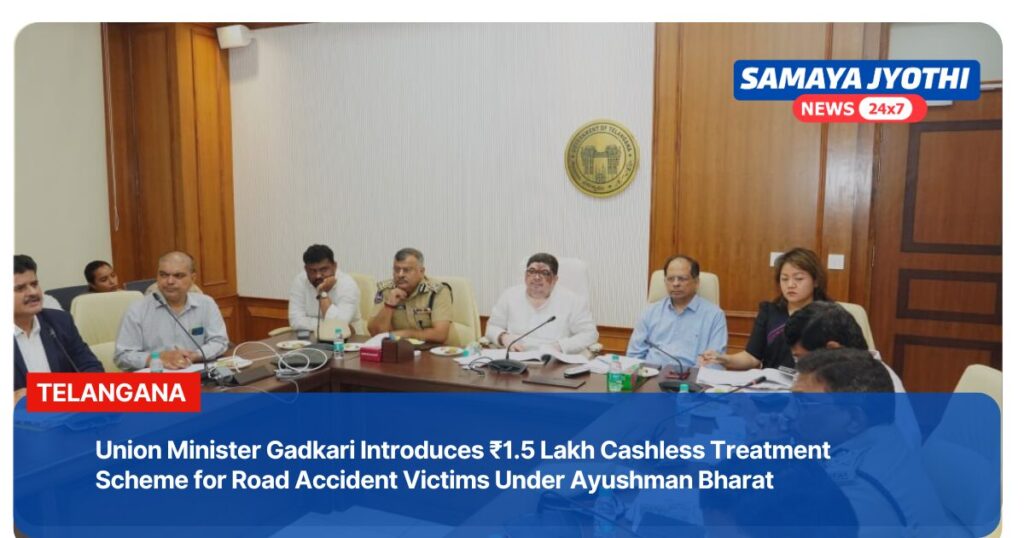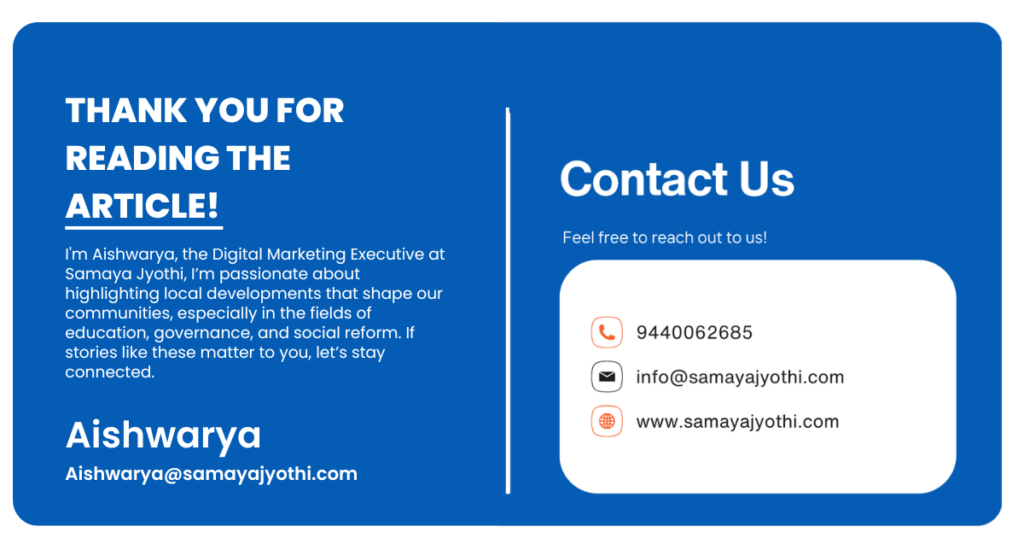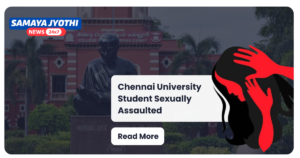- Home
- Latest News, Telangana
- Union Minister Gadkari Introduces ₹1.5 Lakh Cashless Treatment Scheme for Road Accident Victims Under Ayushman Bharat
Union Minister Gadkari Introduces ₹1.5 Lakh Cashless Treatment Scheme for Road Accident Victims Under Ayushman Bharat
Cashless Treatment Scheme 2025: Union Minister Gadkari’s Landmark Initiative to Aid Road Accident Victims
In a major milestone for public health and road safety, Union Minister Nitin Gadkari has launched the Cashless Treatment Scheme for Road Accident Victims – 2025, under the purview of Section 162 of the Motor Vehicles Act, 1988. The scheme ensures cashless treatment of up to ₹1.5 lakh per victim, within one week of the accident, across empaneled hospitals under the Ayushman Bharat PM-JAY network.
This proactive and humanitarian reform aims to reduce preventable deaths caused by delayed treatment and financial constraints, and is seen as a transformative move for India’s road safety ecosystem.
How the Scheme Works
The Cashless Treatment Scheme 2025 guarantees that any individual injured in a road traffic accident will receive immediate medical care without upfront payment, up to a maximum financial ceiling of ₹1.5 lakh. This support is valid for seven days from the date of the accident.
The treatment will be made available at empaneled hospitals under the Ayushman Bharat Pradhan Mantri Jan Arogya Yojana (PM-JAY) network, ensuring access across urban and rural regions of India.
Immediate Response Protocol via E-DAR
A critical feature of the scheme is the mandatory use of the E-DAR (e-Detailed Accident Report) system by the police. Every police station is instructed to:
Immediately respond to accident alerts
Record details into E-DAR in real-time
Guide victims and bystanders to the nearest empaneled hospitals
Raise public awareness about the scheme regularly
The seamless integration of law enforcement, transport, and healthcare is expected to enhance the efficiency and effectiveness of road accident responses.
Government’s Directive for Implementation
The Government of India has issued clear directives to state governments to ensure full-scale coordination across departments. In this regard, a review meeting was held at the Telangana Secretariat, attended by top officials from:
Transport Department
Health & Medical Department
Police Department
Insurance providers
NIC (National Informatics Centre)
During the session, detailed discussions were held on data integration, inter-agency cooperation, hospital preparedness, and public communication strategies.
Officials emphasized that the success of the scheme hinges on state and district-level coordination, real-time data entry, and awareness at the grassroots level.
Key Objectives of the Scheme
Reduce Fatalities and Disabilities: By ensuring immediate and free treatment, the scheme aims to drastically lower mortality and long-term disability caused by road trauma.
Relieve Financial Burden: Victims, especially from low-income backgrounds, often delay treatment due to cost. This cashless scheme eliminates that barrier.
Strengthen Institutional Coordination: The inclusion of police, health, transport, insurance, and NIC aims to create a synchronized response system.
Enhance Data Reporting and Claims: The use of E-DAR standardizes accident data, enabling quicker insurance processing and national-level safety analytics.
Nationwide Rollout Under Ayushman Bharat
With over 26,000 empaneled hospitals under Ayushman Bharat, the reach of the Cashless Treatment Scheme 2025 is unprecedented. Both government and private hospitals under the scheme are eligible to treat accident victims, expanding access to emergency care.
Hospitals are being trained to handle these cases efficiently, and toll-free helplines will be made available for immediate reporting and assistance.
Public Awareness Campaigns: A Must for Success
The scheme mandates that every police station in the country conducts regular awareness drives. In Telangana, for instance, local law enforcement agencies have already begun publicizing the initiative through posters, community meetings, and social media platforms.
Local officials are being trained to disseminate accurate information, encourage people to report accidents without fear, and inform victims of their rights under the scheme.
Gratitude to Union Minister Gadkari
Transport and health officials, along with civil society members, have thanked Union Minister Nitin Gadkari for this game-changing welfare initiative. His consistent advocacy for road safety reforms, including vehicle fitness checks, blackspot elimination, and digital accident reporting, has made him a pioneer in India’s traffic safety transformation.
“The Cashless Treatment Scheme is not just a policy—it is a lifeline. We thank Shri Gadkari ji for leading with compassion and vision,” said an official during the Telangana Secretariat review meeting.
Conclusion: India’s Road to Safer Streets
The Cashless Treatment Scheme 2025 reflects a paradigm shift in how India handles road accident emergencies. By removing financial barriers, leveraging digital reporting tools like E-DAR, and enabling interdepartmental collaboration, the Government of India is putting human lives first.
As Telangana and other states gear up for full-scale implementation, it is imperative that citizens, officials, and healthcare providers work together to maximize the impact of this lifesaving scheme.
The road to safety starts not only with better roads and vehicles—but also with compassionate governance and timely intervention.
As the April 2 deadline approaches, Canada, Mexico, and US industries will closely monitor the administration’s next move, preparing for potential shifts in trade relations and economic policies.
Click for more latest news. Also get top headlines and latest news from India and around the world at samaya jyothi







